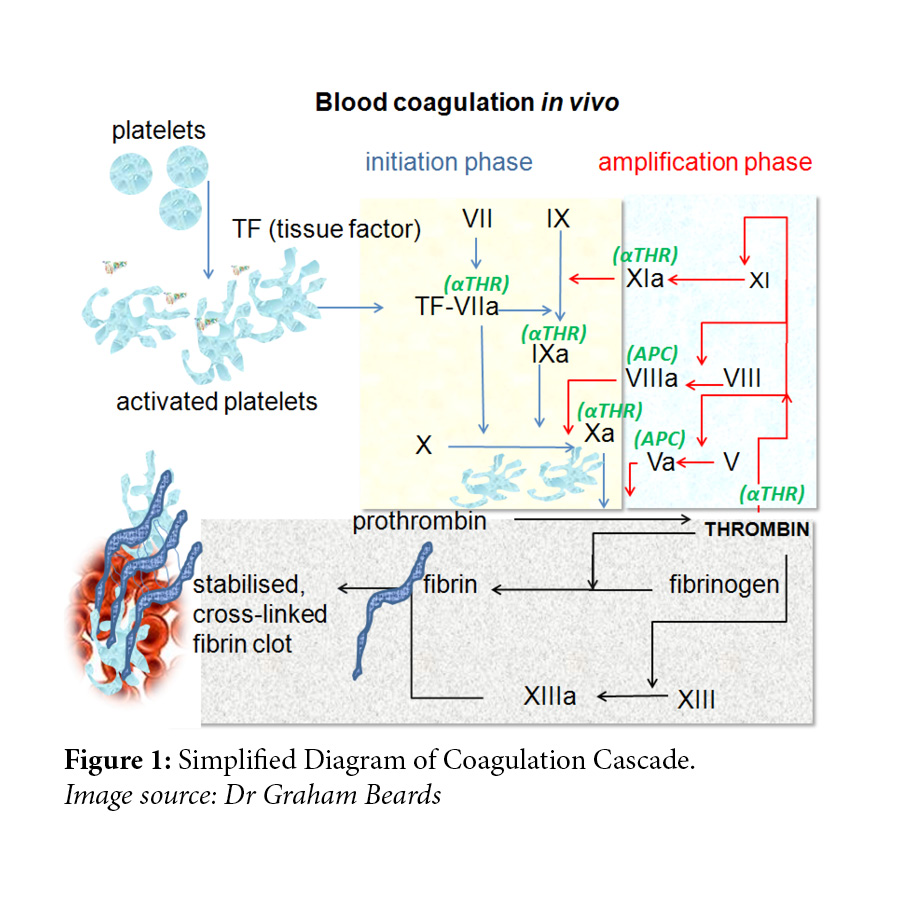Trauma-induced coagulopathy is the catastrophic malfunction of blood coagulation after massive injuries. We investigate coagulopathy using a combination of systems biology modeling and analysis of clinical data.
 The goal of our systems biology effort is to understand coagulopathy and to use this understanding to be able to predict the effects of possible therapies on patient outcome. To this end we use two approaches--bottom-up and top-down. In the bottom-up approach, we simulate a damaged blood vessel using a partial differential equation model of blood chemistry and flow (Figure 1), validated through microfluidic experiments, to model the effects of an injury on blood chemistry. In order to do this we must consider the interconnections between the coagulation system, the fibrinolytic system as well as the immune response. In the top-down approach we mine clinical data from trauma centers with machine-learning techniques to identify the measurable variables that are most closely associated with a healthy outcome. We use these variables to identify common states and trajectories that patients undergo after trauma. We then use this information to evaluate treatments and possibly identify future treatments.
The goal of our systems biology effort is to understand coagulopathy and to use this understanding to be able to predict the effects of possible therapies on patient outcome. To this end we use two approaches--bottom-up and top-down. In the bottom-up approach, we simulate a damaged blood vessel using a partial differential equation model of blood chemistry and flow (Figure 1), validated through microfluidic experiments, to model the effects of an injury on blood chemistry. In order to do this we must consider the interconnections between the coagulation system, the fibrinolytic system as well as the immune response. In the top-down approach we mine clinical data from trauma centers with machine-learning techniques to identify the measurable variables that are most closely associated with a healthy outcome. We use these variables to identify common states and trajectories that patients undergo after trauma. We then use this information to evaluate treatments and possibly identify future treatments.
